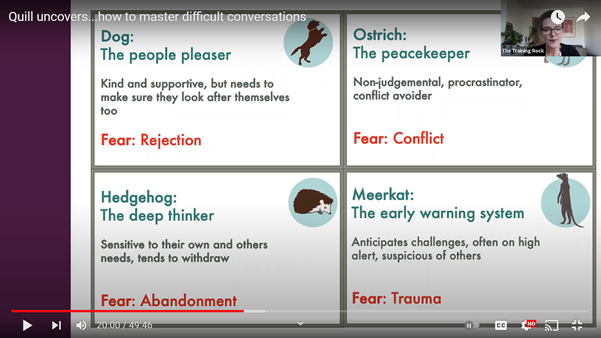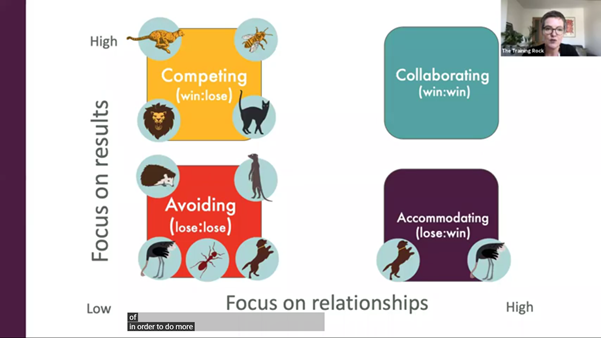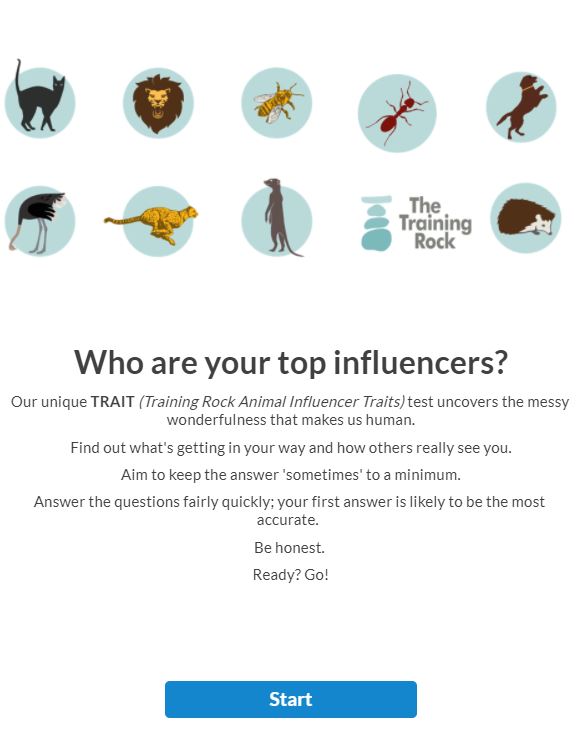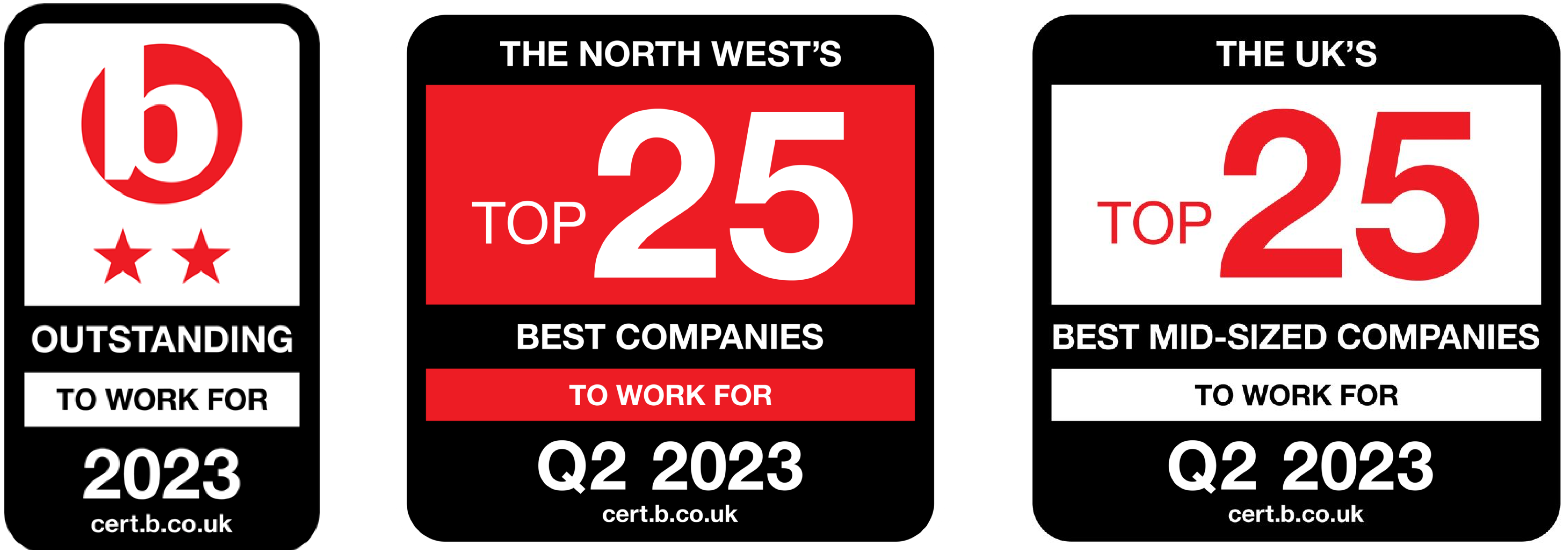
The 7 secrets to mastering difficult conversations
02/11/21Do you remember the last difficult conversation you had with a work colleague?
It may have been something as simple as asking someone to stop stealing food from the office fridge. It may have been something more serious like letting someone go. Whatever it was, chances are it wasn’t particularly nice.
Difficult conversations in the workplace are inevitable, but they can become destructive if not dealt with effectively, and law firms are no different.
A few years ago at Quill, we realised we were failing to manage those difficult conversations in a productive and timely manner. Rather than ignore the issue, we changed it. We got in touch with Jo and Katie from The Training Rock and asked them to show us where we were going wrong.
We’ve worked with Jo and Katie ever since and it was a pleasure to host them in our latest webinar, as they shared their top tips for navigating difficult scenarios and conversations. There were plenty of lessons for us all, but I’ve listed my top seven below.
WATCH WEBINAR
1 – Attack or avoid? Do neither.
Most people have two instinctive responses to confrontation: either they avoid it out of fear, or they go in all guns blazing. Neither option is a great response, but there is an alternative.
To overcome the ‘attack-avoid’ dilemma, you need to change your mindset to see difficult conversations as an opportunity to build. Face the situation, but approach it with a non-hierarchical mindset. If you use your words wisely, with empathy and without hostility, then that conversation which you were dreading will be much more honest and productive as a result.
2 – Remember, the objective isn’t to win
If you go into a conversation with the intention to win, you’re only setting yourself up for failure – because you’re treating it like a battle. In reality, the goal of a conversation should be to listen to each other, and settle on an outcome that is beneficial to both.
Instead of fighting to be right, open yourself up to the idea that you might both be wrong. That way, you’re more likely to see what each of you are overlooking.
3 – Change your mindset, not your script
How many times have you seen someone do something you didn’t agree with and thought “I would never behave like that”? Probably more than once. But this kind of internal dialogue is more unhelpful than you think.
As anyone who has been married will tell you, you can’t change the behaviour of others – you can only adjust your own. The same goes in the workplace. If you and a colleague are locking heads, remember that the first and best person to examine is always yourself. How can you expect an uncomfortable scenario to change if you aren’t willing to do the same?
4 – Find your animal influencer
Most of the frustration in difficult situations comes because we expect everyone to think exactly like us. But that isn’t realistic. We all have different instincts and behaviours which define how we respond to conflict. To make things a little easier, The Training Rock has handily broken these personalities down into 9 different categories, each represented by an ‘animal influencer’:
- Dog
- Ostrich
- Hedgehog
- Meerkat
- Honey Bee
- Cheetah
- Lion
- Cat
- Ant
-
Each influencer approaches conflict in a different way, resulting in problems that are unique to them. For instance, the ostrich fears conflict and tends to put its head in the sand in order to keep the peace. On the other side of the spectrum is the lion, a straight-talker who never backs down from a challenge.
While dogs, ostriches, hedgehogs and meerkats are more concerned about maintaining relationships, honey bees, cheetahs, lions and cats are more focused on getting the result they desire, with ants being a mixture of both.
Interested in finding out which animal is your main influencer? Take The Training Rock’s trait test today.
5 – There are 4 main approaches to conflict
But only one of them ends well…
Competing: You set out to “win” regardless of the impact that this victory may have on the other parties. You may win, but there will always be a loser.
End result? Win:Lose
Avoiding: You steer clear of the conflict and in the process ensure that nothing gets addressed. Avoiding should be avoided at all costs (pardon the pun).
End result? Lose:Lose
Accommodating: This basically involves giving the win to the other party, which often means over-cooperating at the expense of reaching your own goals.
End result? Lose:Win
Collaborating: Both parties work together to resolve their issue, leading to a richer outcome.
End result? Win:Win
As you might expect, these approaches are closely linked to animal influencers. Those relationship-focused animals are more likely to opt for avoiding or accommodating, while the results-driven ones are firmly in the competing camp.
Thinking about workplace conflict in this manner can be a really useful exercise because, if we can understand what our default behaviour is likely to be, we can identify what steps we need to take in order to collaborate more effectively.
Remember. You can choose to be right, or you can choose to collaborate. You can’t do both.
6 – To move forward, you need to BUILD
Animal influencers are all well and good, but how do you put it all into practice when conflict does arise in your workplace? Again, The Training Rock has a handy solution, and it’s to BUILD.
Be aware: As soon as conflict arises, don’t avoid it, don’t explode, just stop and be aware. Once you have taken a second to accept and rationalise the situation, you can begin to better understand it.
Understand: If you want to master difficult conversations, you need to understand that the person on the other side of the conversation isn’t being any more intentionally difficult than you are. You both have your own reasons for your actions, you just need to come to terms with what they are.
Influencers: Once you’ve accepted that nobody is being intentionally difficult, (even if it may seem like they are) have a look and see which animal influencer is in play for you. When you know who your main influencer is, you can identify what your default approach is likely to be and what you need to do to move towards collaboration.
Listen: You can’t see someone else’s point of view simply by talking. Even when you are sure you are right, listening to the other party’s point of view goes a long way in shifting the conversation from a conflict to collaboration. Try asking the following question, and let them speak without interruption: “Can you help me to see things the way you see it?”
Develop: Our default is to jump in with a solution, particularly when you’re confident that you’re right. But if we can follow this holistic approach to see the full picture before diving in, you’ll turn difficult conversations into, well, just conversations.
7 – When you BUILD, the team will follow
Following the BUILD approach will not only help you master difficult conversations, it can also have a bunch of other positive knock on effects for your organisation. The best one? Helping you build an extraordinary team.
A lot of business leaders are happy to spend time, effort and money recruiting the right people and then, once they start, just hope that teamwork falls into place. But good teamwork doesn’t just happen by accident. It comes as a result of opening yourself up to difficult conversations and consistently achieving constructive collaborations.
And, in the words of Simon Sinek: “It’s better to have a great team, than a team of greats.”
That’s what we’ve proven here at Quill. Our work with The Training Rock has enabled us to improve our engagement with employees and clients, and is one of the many reasons why we have been voted as one of the best companies to work for in the UK.
When a difficult conversation arises? We don’t shout it out of the room. Neither do we hide from it. We approach it fairly and calmly, and we all benefit as a result.
If you too want to learn the art of mastering difficult conversations, be sure to take The Training Rock’s Trait Test below. Remember, the first step to having a difficult conversation is to identify how you approach them first.
More from our blog

15th February
It’s a wrap: January recap and rebrand
Having returned to work rested and recuperated after the Christmas break, we’ve gotten straight into business mode in January, and completed a major phase in our integration into Dye and Durham by rebranding our digital and physical assets.

25th January
Four ways to help your team embrace new technology
Our new top tips cover choosing technology that solves your team's problems, involving your team in the decision, training everyone thoroughly in the new software and phasing in the new system.

18th December
A year in Quill: 2023 under review
In our 2023 review, we thank you for another successful year in business and take you on a trip down Memory Lane.





